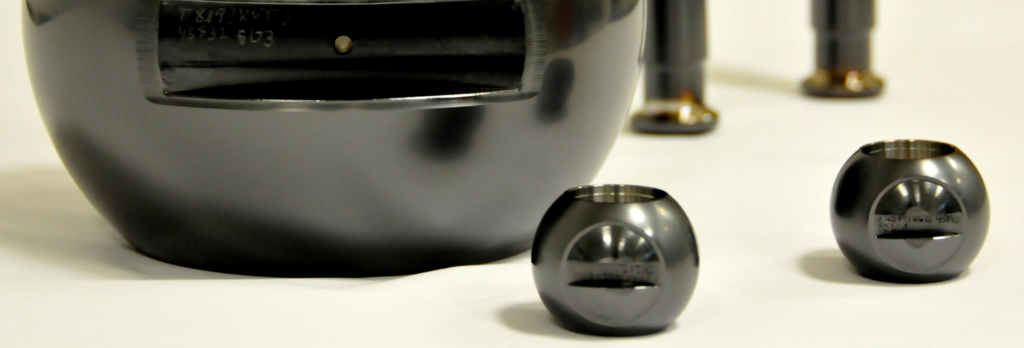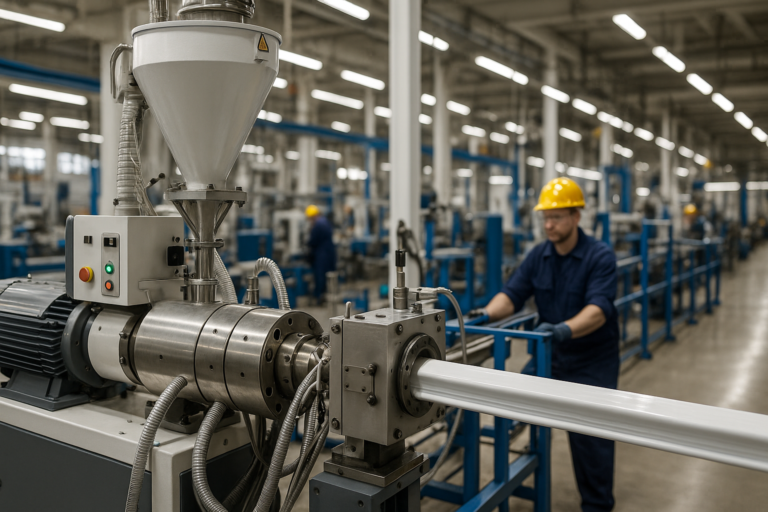Realiza algunos cambios en el entorno mundial
-
Edificio 3, Ciudad de la Innovación Wanyang, Calle Langxia, Ciudad de Yuyao, Provincia de Zhejiang

Guía completa de servicios de revestimiento DLC
Los servicios de revestimiento de carbono similar al diamante (DLC) han ganado una importante tracción en diversos sectores debido a sus notables propiedades, como alta dureza, baja fricción y excelente resistencia al desgaste. Estos recubrimientos, que imitan algunas de las características del diamante natural, se aplican a una amplia gama de materiales para mejorar su rendimiento, durabilidad y longevidad. Este artículo explora los fundamentos de los recubrimientos de DLC, los procesos que intervienen en Servicio de revestimiento DLCSus ventajas, aplicaciones y consideraciones clave para elegir un proveedor de servicios.

¿Qué son los revestimientos DLC?
Los recubrimientos de DLC son una clase de materiales de carbono amorfo que presentan propiedades similares a las del diamante, como una dureza excepcional y un bajo coeficiente de fricción. El término "similar al diamante" se refiere a la presencia de enlaces de carbono sp3 (típicos del diamante) junto a enlaces sp2 (característicos del grafito), creando una estructura híbrida única. Según el método de deposición y la composición, los recubrimientos de DLC pueden variar en contenido de hidrógeno, dureza y otras propiedades, lo que los hace muy personalizables para aplicaciones específicas.
Estos revestimientos suelen aplicarse como películas finas, de 1 a 5 micras de grosor, mediante técnicas avanzadas como el depósito físico en fase vapor (PVD) o el depósito químico en fase vapor asistido por plasma (PACVD). El resultado es una superficie duradera y deslizante que mejora el rendimiento del material del sustrato, ya sea metal, plástico o incluso vidrio.

El proceso de revestimiento DLC
Los servicios de recubrimiento con DLC utilizan tecnologías sofisticadas para depositar estas finas películas sobre los sustratos. Los dos métodos principales son:
- Deposición física de vapor (PVD): En este proceso, el carbono se vaporiza en una cámara de vacío y se deposita sobre el sustrato. Se suelen utilizar variantes como el PVD por arco y el sputtering. El PVD por arco produce revestimientos de carbono amorfo tetraédrico (ta-C) sin hidrógeno, conocidos por su extrema dureza (hasta 5000-9000 HV). El PVD es ideal para aplicaciones que requieren una gran resistencia al desgaste, como las herramientas de corte y los componentes de automoción.
- Deposición química en fase vapor asistida por plasma (PACVD): Este método implica el uso de un plasma para descomponer un gas que contiene carbono, depositando una capa de carbono amorfo hidrogenado (a-C:H) sobre el sustrato. Los revestimientos PACVD suelen tener una dureza de 1200 a 2200 HV y se aplican a temperaturas más bajas (inferiores a 300°C), lo que los hace adecuados para materiales sensibles al calor como el aluminio o los aceros poco templados.
Algunos servicios de revestimiento con DLC también ofrecen procesos híbridos, que combinan PVD y PACVD para crear revestimientos multicapa con propiedades a medida, como una mayor adherencia o características de fricción específicas. La elección del método depende del material del sustrato, las propiedades deseadas del revestimiento y la aplicación prevista.
Ventajas de los servicios de revestimiento DLC
Los recubrimientos de DLC ofrecen una gran cantidad de ventajas, lo que los convierte en la opción preferida de las industrias que buscan mejorar el rendimiento de los componentes. Estas son algunas de las principales ventajas:
- Gran dureza: Con niveles de dureza que rivalizan o superan los del diamante natural, los revestimientos de DLC protegen las superficies de la abrasión y el desgaste, lo que prolonga considerablemente la vida útil de los componentes.
- Baja fricción: La superficie lisa y lubricada de los revestimientos de DLC reduce la fricción (coeficientes tan bajos como 0,05-0,2), minimizando la pérdida de energía y el desgaste de las piezas móviles, incluso en condiciones secas.
- Resistencia a la corrosión: Los revestimientos de DLC actúan como barrera contra los ataques químicos y la oxidación, por lo que son ideales para entornos difíciles.
- Biocompatibilidad: Ciertas fórmulas de DLC son seguras para aplicaciones médicas y de contacto con alimentos, ya que ofrecen una superficie no reactiva y respetuosa con el medio ambiente.
- Versatilidad: Estos revestimientos pueden aplicarse a una amplia gama de sustratos, como acero, titanio, aluminio y cerámica, y pueden personalizarse con dopantes (por ejemplo, silicio o metales) para mejorar propiedades específicas.
- Atractivo estético: Los revestimientos de DLC suelen ofrecer un acabado elegante y oscuro que realza el atractivo visual de productos como relojes, armas de fuego y molduras de automóviles.
Aplicaciones de los servicios de revestimiento DLC
La versatilidad de los recubrimientos DLC ha llevado a su adopción en numerosas industrias. Algunas aplicaciones destacadas son:
- Industria del automóvil: Los recubrimientos de DLC se utilizan ampliamente en componentes de motores como segmentos de pistón, árboles de levas e inyectores de combustible para reducir la fricción, mejorar la eficiencia del combustible y prolongar la vida útil. Los equipos de carreras también confían en el DLC para mejorar el rendimiento de las aleaciones ligeras.
- Productos sanitarios: Los recubrimientos de DLC biocompatibles se aplican a herramientas quirúrgicas, implantes e instrumentos dentales para reducir el desgaste, evitar el gripado y garantizar una superficie higiénica.
- Herramientas de corte y moldes: En la fabricación, las brocas, fresas y moldes de inyección con recubrimiento de DLC se benefician de una mayor dureza y menor adherencia, lo que se traduce en una mayor eficacia y menores costes de mantenimiento.
- Aeroespacial y Defensa: Los sistemas ópticos y los componentes mecánicos de entornos difíciles utilizan revestimientos de DLC por su durabilidad y transparencia infrarroja, como se observa en los sistemas de imágenes térmicas.
- Bienes de consumo: Desde hojas de afeitar hasta relojes de lujo, los revestimientos de DLC mejoran la durabilidad y proporcionan un atractivo acabado resistente a los arañazos.
- Equipos industriales: Las cuchillas de envasado, las bombas hidráulicas y las superficies de desgaste de la maquinaria industrial se benefician de la resistencia al desgaste y la baja fricción de los revestimientos de DLC.
Elección de un proveedor de servicios de revestimiento de DLC
Seleccionar al proveedor de servicios de revestimiento de DLC adecuado es fundamental para lograr resultados óptimos. He aquí algunos factores a tener en cuenta:
- Conocimientos y experiencia: Busque un proveedor con un historial probado en aplicaciones de revestimiento de DLC. Las opiniones positivas de los clientes y los estudios de casos pueden indicar fiabilidad y calidad.
- Capacidades técnicas: Asegúrese de que el proveedor ofrece el método de deposición específico (PVD, PACVD o híbrido) y el tipo de revestimiento (por ejemplo, ta-C o a-C:H) adecuados a sus necesidades. Los equipos avanzados y las opciones de personalización también son una ventaja.
- Compatibilidad con sustratos: Compruebe que el proveedor puede recubrir el material de su elección, ya que algunos sustratos (por ejemplo, metales blandos como el latón) pueden requerir una preparación especial para garantizar la adherencia.
- Tiempo de respuesta y escalabilidad: Para aplicaciones industriales, evalúe la capacidad del proveedor para gestionar su volumen y cumplir los plazos. Los plazos pueden variar de días a meses en función del tamaño de los lotes y de la participación de terceros.
- Coste y retorno de la inversión: Aunque los servicios de revestimiento con DLC pueden oscilar entre $20 por pieza (para lotes pequeños) y costes más elevados para proyectos personalizados, evalúe la rentabilidad de la inversión en función de la mejora del rendimiento y la reducción de los gastos de mantenimiento.
- Atención al cliente: Un equipo atento y bien informado puede ayudarle a adaptar el revestimiento a su aplicación y a resolver cualquier problema posterior al servicio.
Tendencias futuras en los servicios de revestimiento DLC
El futuro de los servicios de recubrimiento con DLC parece prometedor, impulsado por los avances en la ciencia de los materiales y la creciente demanda industrial. Los investigadores están explorando nuevas técnicas de dopaje para mejorar la conductividad eléctrica o las propiedades térmicas, ampliando la utilidad del DLC en electrónica y almacenamiento de energía. Además, la integración de los recubrimientos de DLC en los procesos de fabricación (por ejemplo, directamente sobre los moldes) en lugar de su aplicación posterior a la producción podría agilizar la producción y reducir los costes. A medida que sectores como la automoción y la sanidad den prioridad a la durabilidad y la sostenibilidad, se espera que aumente la demanda de recubrimientos ecológicos y de alto rendimiento como el DLC.
Conclusión
Los servicios de recubrimiento DLC ofrecen una solución transformadora para mejorar el rendimiento y la longevidad de los componentes en diversas aplicaciones. Al combinar una dureza similar a la del diamante con una lubricidad similar a la del grafito, estos revestimientos resuelven problemas como el desgaste, la fricción y la corrosión de un modo que los tratamientos tradicionales no pueden. Tanto si usted es un ingeniero de automoción que busca una mayor eficiencia de combustible, un fabricante de dispositivos médicos que busca biocompatibilidad o un fabricante de bienes de consumo que busca durabilidad y estética, los recubrimientos DLC ofrecen una opción versátil y fiable. Al asociarse con un proveedor de servicios cualificado, las empresas pueden liberar todo el potencial de esta avanzada tecnología, garantizando que sus productos prosperen incluso en las condiciones más exigentes. A medida que la innovación siga impulsando los revestimientos DLC, su papel en la industria moderna irá en aumento, convirtiéndolos en una herramienta esencial para el futuro.



